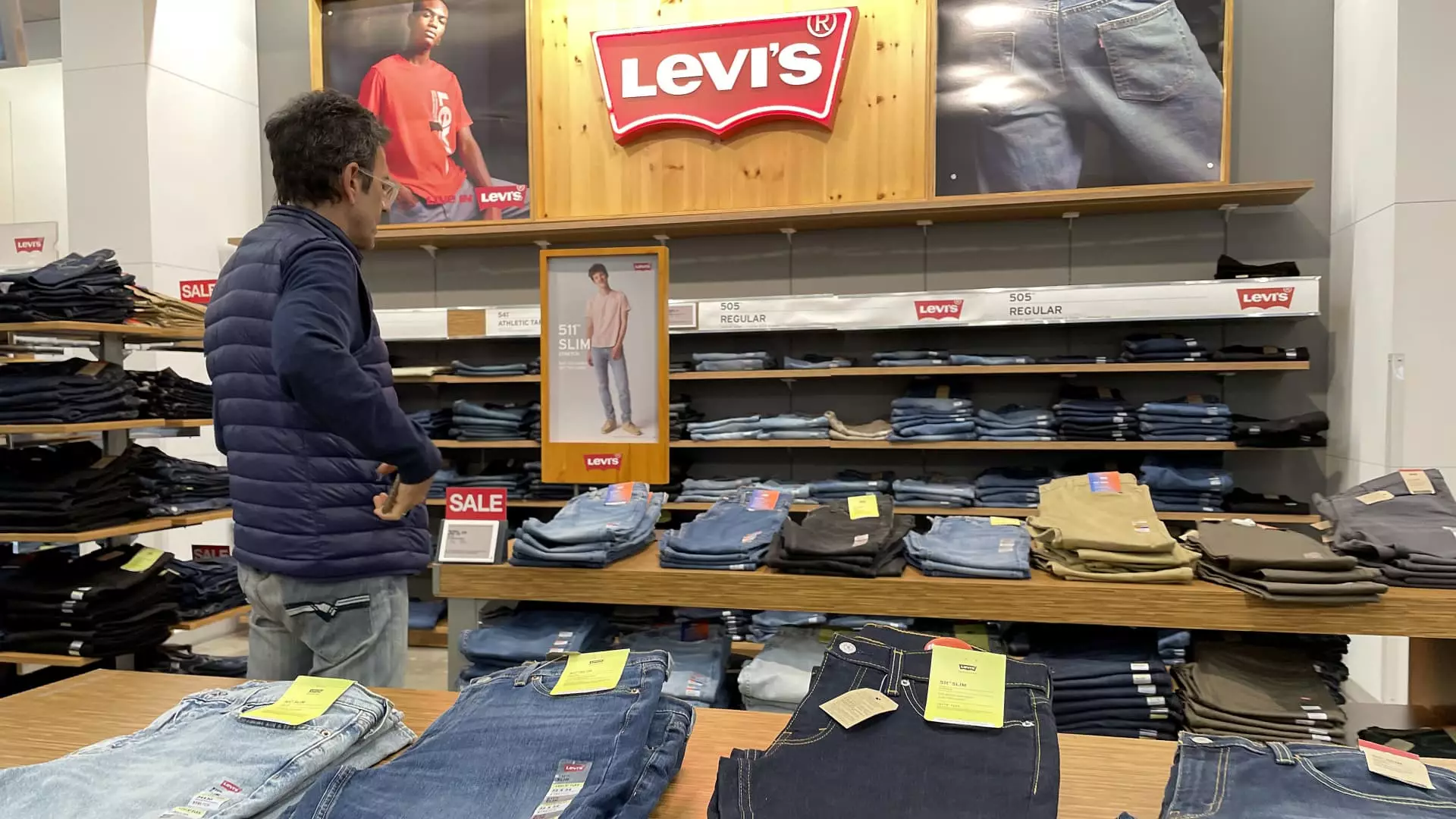Levi Strauss & Co, a titan in the denim industry, has recently witnessed a surge in consumer interest, particularly for its iconic Levi’s jeans. However, the company’s performance is somewhat overshadowed by the struggles of its Dockers brand, which is now under serious review for potential divestment. The contrast between the buoyant sales of the Levi’s brand and the declining fortunes of Dockers reflects a broader trend in the apparel market, where consumer preferences are rapidly evolving.
During its recent fiscal third quarter, Levi’s reported a commendable 5% growth in sales for the Levi’s brand—the highest increase the company has seen in two years. Yet, despite this encouraging development, overall revenue stagnated, leading to disappointment among investors and analysts alike. Following the announcement, Levi’s shares experienced a steep decline of over 8% in after-hours trading, indicative of the market’s reaction to the company’s mixed results.
In analyzing the financial performance, it is important to consider the specifics of the report. Levi’s earnings per share of 33 cents surpassed analysts’ expectations of 31 cents. The company’s revenue hit $1.52 billion, slightly up from $1.51 billion year-over-year, yet still fell short of Wall Street’s forecast of $1.55 billion. The net income for the quarter reached $20.7 million, a notable increase from the $9.6 million recorded last year, yet questions remain about the company’s overall growth trajectory.
As the fiscal year nears its end, Levi’s has reiterated its adjusted earnings guidance of between $1.17 and $1.27 per share, aligning closely with market expectations. However, it has revised its revenue growth projections downward from an original estimate of 1% to 3%, now anticipating only a 1% increase in sales for the year. This adjustment is significant, as it reflects the challenges that Levi’s faces in an increasingly competitive retail environment.
The Dockers brand, launched in 1986 to provide an alternative to denim, has struggled to maintain relevance in the contemporary fashion landscape. Once a staple in American wardrobes, khakis have lost their allure, contributing to a staggering 15% decline in Dockers sales, which totaled $73.7 million during the latest quarter. In contrast, Beyond Yoga, an athleisure brand acquired by Levi’s in 2021, reported a remarkable 19% growth in sales, further highlighting the shifting preferences of consumers.
The difficulties faced by Dockers have prompted Levi’s financial leadership to consider the brand’s sale as a strategic move to bolster overall company performance. Harmit Singh, the CFO, noted that divesting Dockers could enhance profit margins and reduce revenue volatility, allowing both Levi’s and Dockers to operate more effectively and capitalize on their unique brand identities.
While the issues surrounding Dockers are significant, Levi’s is experiencing a transformative shift towards direct-to-consumer sales, a strategy that is paying dividends. The company’s gross margins improved by 4.4 percentage points, attributed primarily to reduced costs and the efficiency of direct sales channels. With direct sales accounting for 44% of total revenue, Levi’s aims to elevate this figure closer to 55% in the near future.
This pivot toward direct sales allows the company to forge stronger connections with consumers, utilize data analytics for targeted marketing, and ultimately drive profitability. Notably, the e-commerce segment alone witnessed a 16% increase during the quarter, underscoring the efficacy of Levi’s digital initiatives amid a broader retail transformation.
Part of Levi’s contemporary appeal lies in its deep-rooted connection to culture, a relationship that the brand is leaning on through high-profile marketing campaigns. Recently, the company announced a partnership with Beyoncé, whose song “LEVII’S JEANS” has brought renewed attention to the brand. As CEO Michelle Gass stated, aligning with cultural icons is central to Levi’s strategy, reinforcing the brand’s timeless place in fashion.
Levi’s efforts in Europe proved fruitful, with sales surpassing expectations, yet challenges remain in other territories, such as the Americas and Asia, where external factors, including a cybersecurity breach affecting a key wholesale partner, impacted performance. Furthermore, the Chinese market, despite its long-term potential, continues to present significant hurdles amid economic headwinds.
As Levi Strauss & Co navigates these various challenges, the performance of its Levi’s brand offers a glimmer of hope. The company’s renewed focus on direct consumer engagement, bolstered by strategic marketing collaborations and a reassessment of underperforming brands like Dockers, positions it to adapt in a rapidly changing retail landscape.
However, substantial obstacles remain, particularly concerning shifting consumer preferences and global market dynamics. The road ahead requires a delicate balance between embracing cultural relevance and restoring growth in struggling segments. If Levi’s can successfully navigate these complexities, it may well reclaim its position as a leader in the apparel industry, enduring the ebb and flow of consumer fashion.

